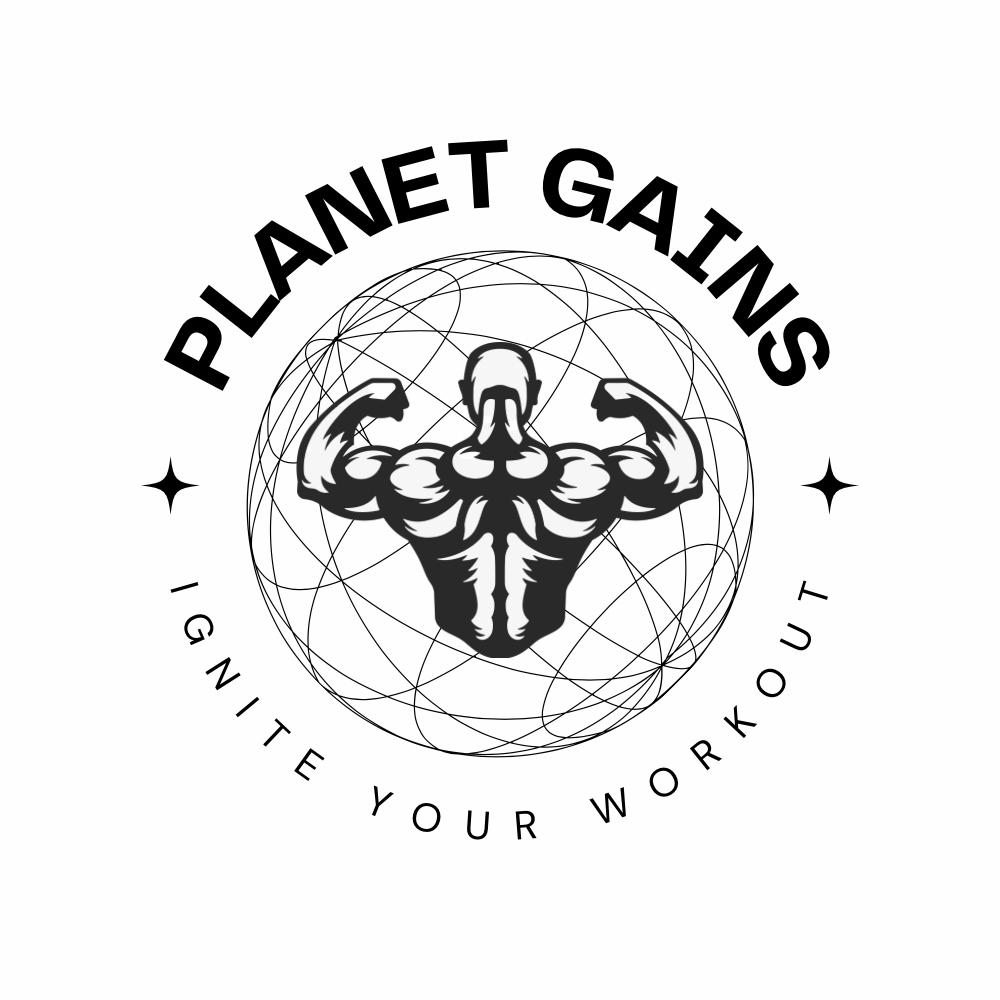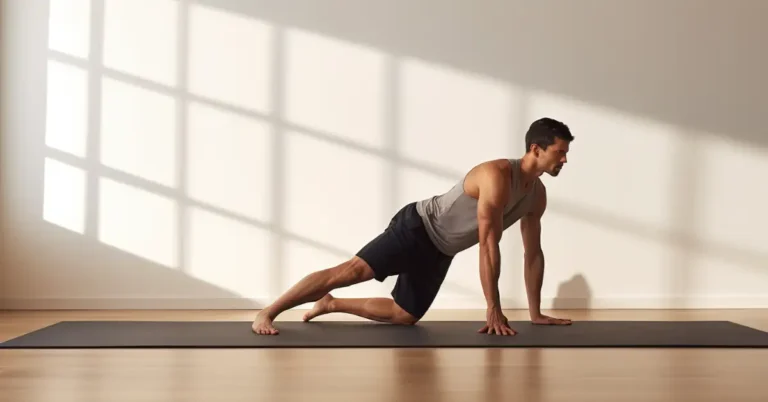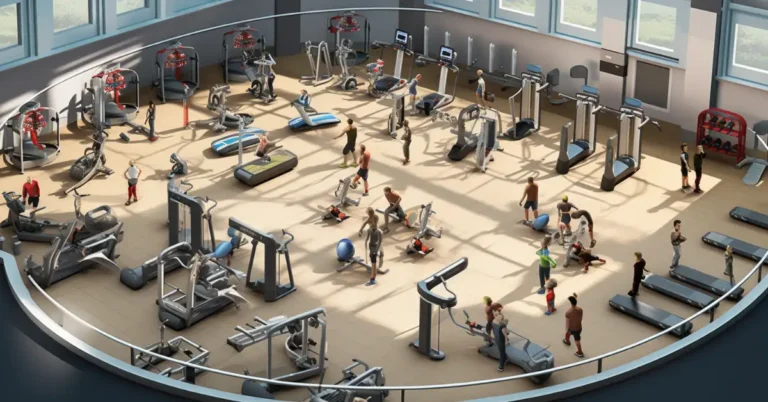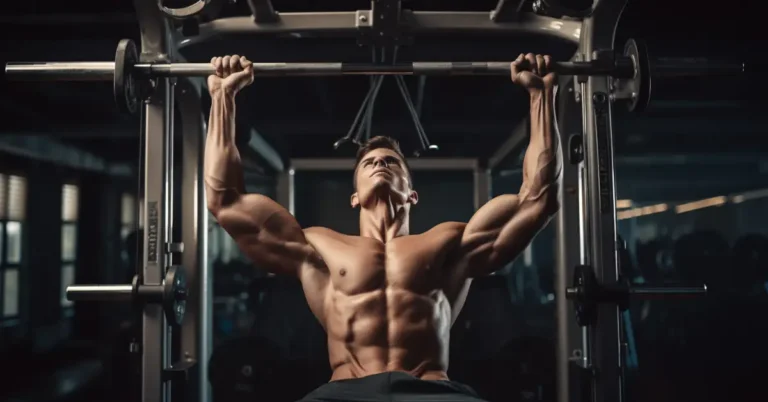📦 FREE Shipping
My Favorite Bodyweight Endurance Workout (Get Fit in 2024)

Bodyweight endurance workouts have always been a personal favorite of mine because they’re such an effective way to build strength and improve overall fitness using nothing more than your own body. I enjoy the simplicity and versatility of these exercises, which can be done almost anywhere — at home, in a park, or a hotel room while traveling.
– Plus, they can be adjusted to suit any fitness level, from beginner to advanced.
The Best Bodyweight Endurance Workout
I find that combining strength with endurance workouts is key for a well-rounded fitness routine. My go-to bodyweight endurance workout is designed to improve endurance, challenge my muscles, and increase my heart rate, all without needing any equipment. Here’s a breakdown of my favorite circuit, which can be done anywhere:
- Warm-Up: 5 minutes of dynamic stretching
- Circuit: Repeat 3-5 times with minimal rest between exercises
- Push-Ups: 15 reps to target the chest, shoulders, and triceps
- Squats: 20 reps for the legs and glutes, making sure to keep my back straight
- Plank: Hold for 1 minute to engage the core
- Lunges: 10 reps on each leg, focusing on stability and depth
- Burpees: 10 reps for a full-body challenge and cardio boost
- Mountain Climbers: 30 seconds to get the heart pumping
Julian
Author at PlanetGains
Tips:
– I always keep my form in check to prevent injury and ensure maximum benefit.
– For progression, I increase the number of circuits, reps, or reduce rest time.
Cool Down:
- I wrap up with 5 minutes of static stretching to aid recovery and flexibility.
Fundamentals of Bodyweight Endurance
In exploring the fundamentals of a bodyweight endurance workout, my focus is on how it contrasts with strength training, the unique advantages of bodyweight exercises, and the multidimensional benefits such training offers.
Understanding Endurance vs. Strength
Endurance and strength represent two different aspects of fitness. Endurance is about how long muscles can perform an activity before fatigue sets in, while strength hinges on the maximum force that muscles can exert in a single effort.
Bodyweight endurance workout aim to improve the stamina of the muscles, allowing me to perform exercises for longer periods. This is different from strength training, which is typically associated with lifting heavy weights for a fewer number of repetitions.
- Endurance Types:
- Muscular Endurance: Ability to exert force repeatedly over time without tiring. Can be trained with muscular endurance workouts.
- Cardio Endurance (Aerobic Fitness): The efficiency with which my heart and lungs work to supply oxygen during protracted activity. Can be trained with cardiovascular endurance workouts.
Bodyweight exercises like push-ups, sit-ups, and squats can be used to test and build muscular endurance. Meanwhile, movements that raise my heart rate, including jumping jacks, burpees, and jump rope endurance workouts contribute to improving my cardio endurance.

Benefits of Endurance Training
Endurance training with bodyweight exercises offers an array of benefits. Not only does it bolster my muscular endurance and cardiovascular health, but it also improves joint stability and contributes to overall body control and balance.
Key Benefits:
- Improved Aerobic Fitness: Frequent bodyweight workouts enhance heart and lung function.
- Increased Muscular Stamina: Allows my muscles to perform activities without quick fatigue.
- Enhanced Daily Function: Better endurance makes daily tasks easier to perform.
- Weight Management: Consistent endurance training can help in managing body weight.
The beauty of focusing on a bodyweight endurance workout is its accessibility and impact on my overall fitness, from aerobic capacity to muscular stamina, which are crucial for health and wellbeing.

Developing a Workout Structure
When I design a bodyweight endurance workout, my main focus is to build stamina and muscle endurance through exercises that improve cardiovascular health, muscle strength, and overall conditioning. The key components include a good warm-up, the application of progressive overload, and determining the right frequency of workouts with adequate rest.
Warm-Up Routines
Before I dive into the intense part of my workout, I always start with a dynamic warm-up to prepare my muscles and joints. This typically includes:
- Running or cycling: 5-10 minutes at a light pace to increase my heart rate.
- Dynamic stretches: Such as leg swings and arm circles for a total of 5 minutes to enhance my range of motion.
- Specific movement patterns: Like air squats and push-ups, starting with low reps to prime my muscles for the workout ahead.
Progressive Overload Principle
The progressive overload principle is crucial for boosting my endurance over time. I implement this by:
- Increasing reps: Gradually adding more reps of exercises such as burpees or push-ups to my routines.
- Reducing rest time: Shortening the rest interval between sets to challenge my muscles and cardiovascular system.
- For time: Completing the same number of reps or rounds but doing so in a shorter time frame, making my workout progressively harder.
Workout Frequency and Rest
Balancing the frequency of my workouts with appropriate rest periods is essential for muscle recovery and avoiding overtraining. My approach includes:
- Frequency: I aim for 3-4 bodyweight endurance sessions per week, each focusing on different muscle groups and types of movements, like swimming, running, or cycling.
- Rest: I ensure at least one full rest day between intense sessions and employ active recovery methods such as light swimming or yoga on off days.
- Listen to my body: I pay attention to signs of fatigue and allow extra rest when needed, knowing that recovery is when muscle fibers repair and grow stronger.
Free PDF Workout Plans For You.
Are you in need of motivation? Here are some powerful workout plans with PDF downloads you can choose from:
— Pamela Reif Workout Plan
— 30 Day Peloton Workout Plan
— Beginner Calisthenics Workout Plan
— Andy Galpin Workout Plan
Core and Lower Body Exercises
When I focus on shaping and strengthening the core and lower body, I prioritize exercises that target multiple muscle groups for efficiency and effectiveness.
Squats and Variations
Squats are fundamental in engaging the quads, hamstrings, and glutes, but variations can target different muscles and add spice to the routine. A classic squat involves standing with feet shoulder-width apart, then bending the knees to lower the body as if sitting back into a chair, keeping my chest up and back straight.
For more engagement, I like to incorporate jump squats in my bodyweight endurance workout; they end with an explosive jump upward from the bottom of the squat, which adds a cardio element and works the calves.
Basic Squat:
- Stand with feet shoulder-width apart
- Bend knees, lower back as if sitting in a chair
- Keep chest up and back straight
- Rise back to starting position
Jump Squat:
- Follows basic squat form
- Explosively jump upward from the bottom of the squat
- Land softly and repeat

Lunges and Hip Workouts
Lunges are powerful for focusing on the hips, glutes, and hamstrings. I start with a basic lunge, stepping forward with one foot and lowering my hips until both knees are bent at a 90-degree angle.
By incorporating side lunges in my bodyweight endurance workout, I also work on my inner and outer thighs. Additionally, hip workouts like bridges predominantly target my glutes and hamstrings, perfect for core stability.
Basic Lunge:
- Step forward with one foot
- Lower hips until knees are bent at 90 degrees
- Keep the front knee above the ankle
- Push back to start
Side Lunges:
- Step out to the side instead of forward
- Bend one knee while the other remains straight
- Push off the bent leg to return to the start
Core Stability and Strength
My core workout is centered on exercises that build stability and strength, crucial for overall body function. The plank position is a go-to for targeting the entire core, including the abs and lower back. By holding my body off the ground in a straight line supported by my forearms and toes, I engage multiple muscle groups. Mountain climbers add movement to the plank, driving knees in towards the chest one at a time, enhancing core engagement and increasing my heart rate.
Plank Position:
- Forearms and toes on the ground
- Body in a straight line from head to heels
- Hold position, engaging core
Mountain Climbers:
- Start in plank position
- Drive one knee towards the chest, then switch
- Repeat, maintaining form

Upper Body and Balance Training
Incorporating upper body bodyweight exercises into your routine can greatly enhance the strength, stability, and coordination of your upper body. Balance is a crucial aspect that shouldn’t be overlooked as it integrates all muscular components for better control and efficiency during movements.
Push-Up Variations
I’ve found that to effectively train the chest, shoulders, and triceps, push-ups are a foundational move. My approach includes variations that enhance balance and stability. Here’s a progression I use:
- Standard Push-Up: Establish a neutral spine, engage the core, and focus on smooth, controlled movements.
- Wide Grip: Targets the chest more by placing hands further apart.
- Diamond Push-Up: Bring hands close together under the chest; this places more load on the triceps and also tests your coordination.
I alternate between these variations to challenge my muscles differently each workout session.
Pull-Up Progressions
Pull-ups engage multiple muscles in the upper body, including biceps, back, and shoulder muscles. Here’s how I build up to a standard pull-up:
- Negative Pull-Ups: Jump up to the bar and lower myself slowly to build strength.
- Assisted Pull-Ups: Use a resistance band or a pull-up assist machine if available.
- Standard Pull-Up: Start with the palms facing away and pull up while keeping a neutral spine.
Performing pull-ups regularly has improved both my upper body strength and my ability to maintain balance.

My experience with a bodyweight endurance workout
I recently decided to incorporate bodyweight endurance workouts into my fitness routine. My goal was to improve my muscular endurance and cardiovascular fitness without the use of any equipment. On my journey, I found that consistency and progression were key to seeing improvements.
I focused on form and gradually increased the repetitions every other day. To my surprise, I felt more energetic and agile within only a few weeks.
I’ve found bodyweight endurance workouts to be extremely flexible. I can perform them anywhere, which really suits my busy lifestyle. I can already notice the difference in my stamina and muscle tone. If you’re considering trying a bodyweight endurance workout, I recommend starting with simple exercises and progressively challenging yourself as you become stronger. You can also start with a simple beginner endurance workout first. Your choice!
Frequently asked questions about bodyweight endurance workout
Do bodyweight exercises build endurance?
Absolutely, a bodyweight endurance workout is brilliant for increasing muscular endurance. I recommend them because they challenge your muscles to sustain efforts over longer periods, which helps in building your overall endurance.
What are 4 exercises for endurance?
For improving endurance, I swear by these four exercises: squats, push-ups, burpees, and mountain climbers. They not only engage multiple muscle groups but also elevate your heart rate, making them perfect for a bodyweight endurance workout.
Is it OK to do endurance training everyday?
While I’m all for regular training, it’s crucial to allow the body to recover. Doing endurance training every day can lead to overtraining, so I advise most people to aim for 3-5 days a week, with rest days in between.
Can bodyweight exercises be cardio?
Certainly! A bodyweight endurance workout is often double as cardio, especially when performed in a high-intensity circuit. They get the heart pumping and can definitely be a part of a cardio routine.
Can you overtrain with bodyweight exercises?
Yes, you can overtrain with bodyweight endurance workouts just like any other form of exercise. It’s important for me to listen to my body and include rest days to prevent burnout and injury. Moderation is key to a balanced routine.
Did you like my favorite bodyweight endurance workout? Let me know in the comments. Make sure to also try Endurance Swim Workouts or Endurance Running Workouts.





